Exploring Hypersensitive Skin to Touch: Symptoms, Causes, and Effective Treatments
What is hypersensitive skin to touch? Discover the symptoms, underlying causes, and proven treatments for this uncommon yet debilitating condition.
Understanding Hypersensitive Skin: An Overview
Hypersensitive skin, also known as allodynia, is a condition where individuals experience pain from stimuli that typically do not cause discomfort. This can include light touch, changes in temperature, or even the movement of hair across the skin. While rare, allodynia is a common symptom associated with various nerve-related disorders and can greatly impact a person’s quality of life.
Types of Allodynia: Tactile, Thermal, and Mechanical
Allodynia can manifest in three primary forms:
- Tactile (static) allodynia: Pain caused by gentle touch or pressure on the skin.
- Thermal allodynia: Pain triggered by changes in temperature, such as a small drop of cold water causing significant discomfort.
- Mechanical (dynamic) allodynia: A painful sensation that occurs when typically harmless stimuli, like a brushing sensation, move across the skin.
Underlying Causes of Hypersensitive Skin
Allodynia can result from a variety of underlying conditions, including:

- Fibromyalgia: A disorder characterized by widespread muscle and joint pain, often accompanied by other symptoms like anxiety, depression, and sleep disturbances.
- Migraine headaches: Changes in nerve signals and chemical activity in the brain can trigger allodynia in some individuals with migraines.
- Peripheral neuropathy: Damage to the nerves that connect the body to the spinal cord and brain, which can stem from conditions like diabetes.
- Multiple sclerosis (MS): A progressive neurological disorder that can cause abnormal pain signals to be transmitted to the brain due to damaged nerves.
- Shingles and postherpetic neuralgia: The varicella-zoster virus that causes shingles can also lead to heightened sensitivity to touch, a common symptom of postherpetic neuralgia.
- Opioid use: Prolonged opioid exposure can induce hyperalgesia, a condition that amplifies pain and may contribute to allodynia.
Symptoms of Hypersensitive Skin
The primary symptom of allodynia is the experience of pain from stimuli that typically do not cause discomfort. This can include:

- Painful sensations from light touch or gentle pressure on the skin
- Discomfort from changes in temperature, such as a small drop of cold water
- Painful reactions to brushing sensations or other movement across the skin or hair
Depending on the underlying cause, individuals with allodynia may also experience additional symptoms, such as anxiety, depression, trouble concentrating, fatigue, or in the case of migraines, increased sensitivity to light or sound, and nausea.
Effective Treatments for Hypersensitive Skin
Treating allodynia requires addressing the underlying condition responsible for the heightened sensitivity. Some common treatment approaches include:
- Medications: Anticonvulsants, antidepressants, and topical treatments may be prescribed to help manage the pain and reduce nerve sensitivity.
- Physical therapy: Specialized exercises and techniques, such as desensitization therapy, can help retrain the nervous system and reduce hypersensitivity.
- Lifestyle modifications: Identifying and avoiding triggers, such as certain fabrics or temperature extremes, can help minimize allodynia episodes.
- Complementary therapies: Techniques like acupuncture, massage, and stress management may provide additional relief for some individuals.
Preventing and Managing Hypersensitive Skin
The key to effectively managing allodynia is to address the underlying condition responsible for the heightened sensitivity. By working closely with healthcare providers to identify the root cause and implement a comprehensive treatment plan, individuals can find relief and improve their quality of life.
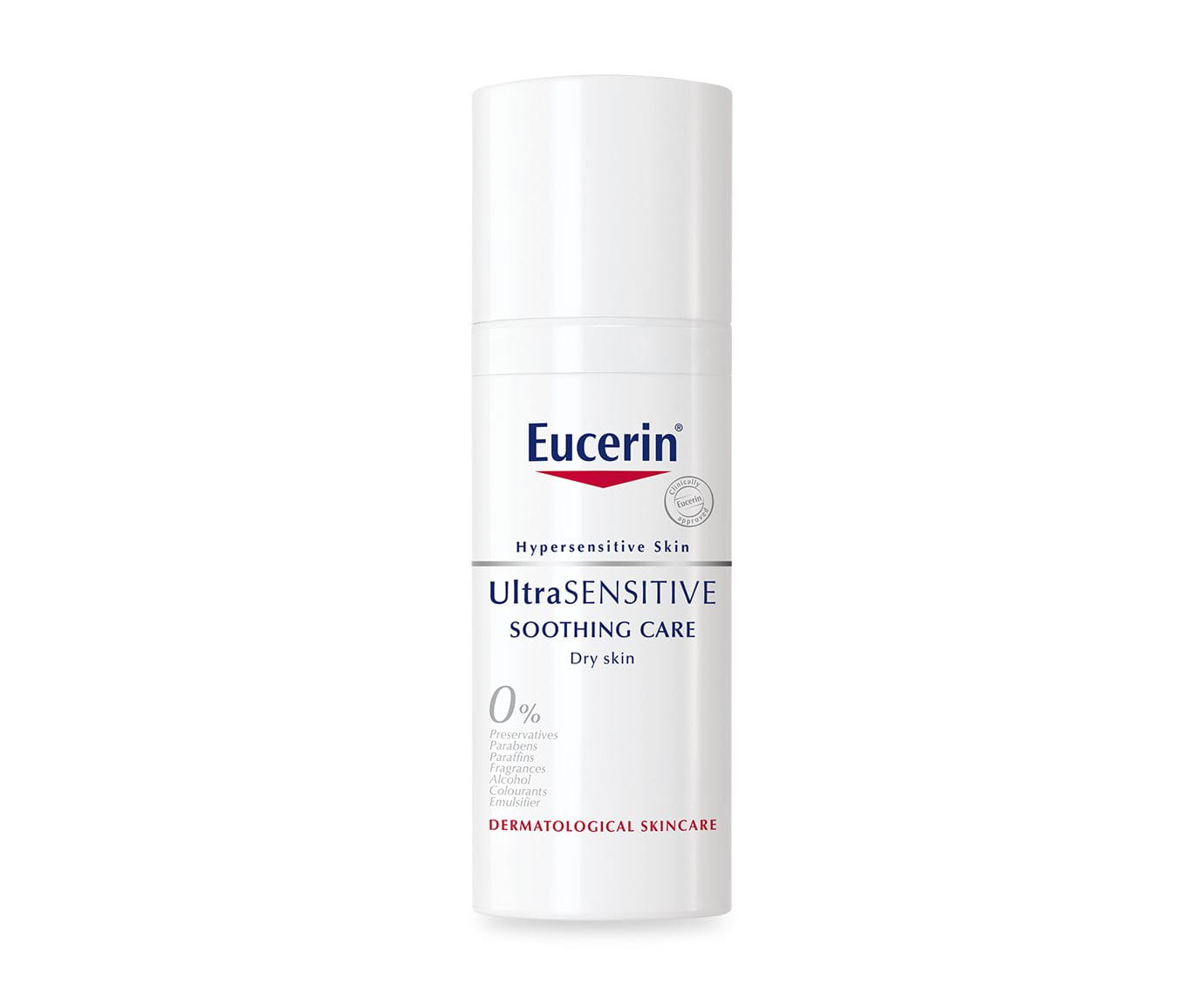
Conclusion
Hypersensitive skin, or allodynia, is a complex and often debilitating condition that can significantly impact an individual’s daily life. Understanding the different types of allodynia, the potential underlying causes, and the available treatment options is crucial for effectively managing this condition and improving overall well-being.
What Is It, Symptoms, Causes, Treatment, and More
Allodynia happens when you feel pain from actions that aren’t typically painful. It can occur due to certain health conditions, including fibromyalgia and migraine.
Allodynia is an uncommon symptom that can result from several nerve-related conditions.
When you’re experiencing it, you feel pain from stimuli that don’t normally cause pain. For example, lightly touching your skin or brushing your hair might feel painful.
Allodynia is rare, though it’s common in people with neuropathic pain. According to a 2014 study, 15 to 50 percent of people with neuropathic pain experience allodynia.
There are three types of allodynia:
- Tactile (static) allodynia: pain caused by gentle touch or pressure
- Thermal allodynia: a change in temperature that causes pain, such as a small drop of cold water that results in significant discomfort
- Mechanical (dynamic) allodynia: a painful sensation that occurs when a person is affected by typically harmless stimuli moving across the skin, such as light touch
“Allodynia is not itself a condition that is diagnosed — it is a symptom that can be associated with certain types of pain,” says Vivianne Tawfik, MD, PhD, a board certified anesthesiologist and pain medicine specialist with Stanford Hospital and Clinics.
According to Medhat Mikhael, MD, medical director of the nonoperative program at Spine Health Center at MemorialCare Orange Coast Medical Center in California, allodynia can result from a “simple touch like a blanket over the painful area or tight cloth.”
To ease allodynia, you will need to treat the underlying cause.
The main symptom of allodynia is pain from stimuli that don’t usually cause pain.
In some cases, you might find hot or cold temperatures painful. You might find gentle pressure on your skin painful. You might feel pain in response to a brushing sensation or other movement along your skin or hair.
Depending on the underlying cause of your allodynia, you might experience other symptoms too.
For example, if it’s caused by fibromyalgia, you might also experience:
- anxiety
- depression
- trouble concentrating
- trouble sleeping
- fatigue
If it’s linked to migraine, you might also experience:
- painful headaches
- increased sensitivity to light or sounds
- changes in your vision
- nausea
Some underlying conditions and lifestyle factors can cause allodynia. It may be linked to:
It may be linked to:
- fibromyalgia
- migraine headaches
- postherpetic neuralgia, a complication of shingles
- peripheral neuropathy, or damage to a group of nerves
- multiple sclerosis (MS)
- shingles
- opioid use
- chemotherapy
- diet and nutrition factors
- diabetes
- trauma
A 2018 clinical trial indicated that PIEZO2, a gene that controls the sense of touch, may contribute to tactile allodynia.
Fibromyalgia
Fibromyalgia is a disorder in which you feel muscle and joint pain throughout your body that isn’t related to an injury or a condition, such as arthritis.
Instead, it seems to be linked to the way your brain processes pain signals from your body. It’s still something of a medical mystery. Scientists don’t quite understand its roots, but it tends to run in families.
Certain viruses, stress, or trauma might also trigger fibromyalgia.
Migraine headaches
Migraine is a condition that causes intense pain. Changes in nerve signals and chemical activity in your brain trigger migraine headaches. In some cases, these changes can cause allodynia.
Changes in nerve signals and chemical activity in your brain trigger migraine headaches. In some cases, these changes can cause allodynia.
Peripheral neuropathy
Peripheral neuropathy happens when the nerves that connect your body to your spinal cord and brain become damaged or destroyed. It can result from several conditions, such as diabetes.
Multiple sclerosis
Multiple sclerosis is a progressive neurologic disorder caused by the loss of myelin, an insulating substance that coats the nerves, spinal cord, and portions of the brain. Damaged nerves transmit abnormal pain signals to the brain. Allodynia is common in MS patients who experience chronic pain.
Chickenpox, shingles, and postherpetic neuralgia
Shingles is a disease caused by the varicella-zoster virus, which also causes chickenpox.
Postherpetic neuralgia is the most common complication of shingles. Heightened sensitivity to touch is a potential symptom of postherpetic neuralgia.
A 2018 study noted that tactile allodynia was common in people with shingles.
“Any nerve damage, however central or peripheral, can be associated with allodynia,” Mikhael says. “The shingle virus causes damage to the affected nerve.”
Opioid use
Opioid use can induce hyperalgesia, a condition involving amplified pain that can lead to allodynia, according to a 2017 review.
“Opioid exposure causes changes in the central nervous system, which can also lead to an intensification of other sensations of pain, including but not limited to allodynia,” says Seth A. Waldman, MD, MBE, director of the division of pain management at Hospital for Special Surgery.
If a person regularly uses opioids, they may feel they need higher doses to alleviate the pain. Mikhael says this can increase the risk of developing allodynia.
“Excessive use of opioids can cause a paradoxical effect, so instead of the narcotics alleviating pain, it causes you to have even more pain and sensitivity,” he says.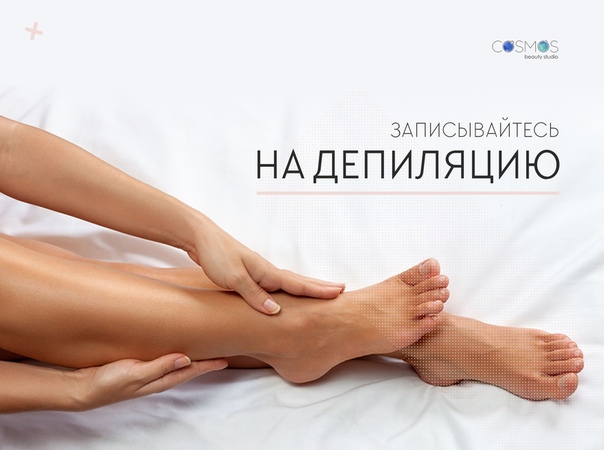
Mikhael notes that several factors contribute to the link between opioid use and allodynia, including:
- brain disorders
- differences in pain processing
- malfunction of opioid receptors
Chemotherapy
Mikhael says chemotherapy can have a toxic effect on nerves, which can result in peripheral nerve damage. Sometimes, this nerve damage causes allodynia.
A 2019 study in mice indicated that chemotherapy could induce mechanical allodynia.
A 2019 paper pointed to research suggesting that mechanical or thermal allodynia frequently occurred in people experiencing chemotherapy-induced peripheral neuropathy (CIPN).
Diet and nutrition
Mikhael notes that vitamin deficiencies can play a role in the development of allodynia. It may also develop as a result of diabetes.
“Vitamin deficiency can cause nerve damage and consequently develop allodynia,” he says. “Correcting and treating deficiencies in vitamins B12, E, B6, folic acid, copper, and B1 are very important. Foods high in fat and sugar tend to aggravate these symptoms even more.”
Foods high in fat and sugar tend to aggravate these symptoms even more.”
A 2017 study in mice suggested that high fat diets and obesity were linked to allodynia.
Trauma
Mikhael says even seemingly minor trauma, like spraining an ankle while playing sports, can result in allodynia.
“The trauma can cause an abnormal response and sensitization of the central nervous system,” he says. “Any crushing injury to the extremity or extreme injury like a spinal cord injury can cause allodynia.”
A small 2021 study involving 30 people with post-traumatic headaches suggested 79 percent of participants experienced hypersensitivity. Of those people, 54 percent were affected by tactile and light hypersensitivity.
If you notice your skin has become more sensitive to touch than normal, you can run a self-test to determine whether you may have symptoms of allodynia. To do this:
- Brush a dry cotton pad on your skin.
- Apply a hot or cold compress.
If you experience a painful tingling feeling in response to any of these stimuli, you might have allodynia. It’s important to make an appointment with a doctor to confirm this.
It’s important to make an appointment with a doctor to confirm this.
Your doctor will go over any underlying conditions, such as diabetes, and ask you about symptoms.
“When discussing with your doctor, come prepared with a description of your pain, as accurate as possible,” says Amanda Persaud, MD, a neurologist with Northwell Health. “The description of the quality of pain is very important when deciphering whether pain is neuropathic, like allodynia.”
Persaud suggests using these terms to describe symptoms, as applicable:
- burning
- throbbing
- constant
- intermittent
- radiating
Tawfik says your doctor will likely run a similar test to your self-examination.
Once a doctor has determined allodynic pain, they can run further tests to find the underlying cause, says William Caldwell, DO, director of the Center for Pain Management at Stony Brook Medicine.
Additional testing for the underlying cause may include:
- blood tests, such as a hemoglobin A1c blood test
- MRI
- electromyography (EMG)
If your doctor suspects you might have diabetes, they will likely order blood tests to measure your level of blood glucose. They might also order blood tests to check for other possible causes of your symptoms, such as thyroid disease or infection.
They might also order blood tests to check for other possible causes of your symptoms, such as thyroid disease or infection.
Mikhael notes that treatment will depend on the underlying cause of your allodynia. Treatments may include:
- oral medications, such as lidocaine (Xylocaine) or pregabalin (Lyrica)
- topical treatments, such as lidocaine ointment or a capsaicin patch
- nonsteroidal anti-inflammatory drugs, such as naproxen (Aleve) or indomethacin
- lifestyle changes, like exercise and dietary changes
- cognitive behavioral therapy (CBT)
- CBD oil
- Sokeikakketsuto (SOKT) for people undergoing chemotherapy
- spinal cord stimulation
- nerve blockers
- surgery
Capsaicin products are commonly used to reduce pain from conditions like arthritis or muscle strains. They can include patches, creams, gels, and ointments.
“Surgery could be an option in cases of nerve entrapment or [central or peripheral] compression,” Mikhael says. “The implantation of neuromodulators can be very helpful in treatment.”
“The implantation of neuromodulators can be very helpful in treatment.”
Still, the best course of treatment is often managing the trigger.
“The focus in the treatment of allodynia needs to be on treating the causative condition,” says Lev Kalika, doctor of chiropractic and owner of New York Dynamic Neuromuscular Rehabilitation & Physical Therapy in New York City.
For example, managing diabetes can reduce allodynic pain, while cognitive behavioral therapy can help you cope better with pain and reduce triggers in your lifestyle.
Allodynia is painful, so it’s understandable people want to prevent it, particularly if they have risk factors.
While Caldwell says that allodynia is not entirely preventable, people with underlying conditions connected to allodynia can reduce their risk of it.
“Allodynic pain can develop with uncontrolled diabetes, and strict glycemic control can help to prevent the development of neuropathic pain,” Caldwell says.
“Allodynic pain can often occur after post-herpetic neuralgia [shingles] or trigeminal neuralgia, which are commonly triggered by stress or anxiety,” he says.
Better management of these can lessen the risk of flares of the underlying disease process, he notes.
Tawfik stresses the importance of seeing a doctor as quickly as possible if you’re experiencing abnormal pain.
“Any time someone has pain that outlasts its usefulness or expected post-injury trajectory, a person should see their doctor,” she says.
Caldwell says the underlying cause of allodynia will often determine people’s outlook.
“In many instances, time and proper treatment can decrease or eliminate pain,” he says. “Sometimes more advanced interventional pain procedures are needed to control the pain long term.”
Caldwell also notes allodynia can be chronic or come back, particularly if the underlying cause is not well managed.
What Is It, Symptoms, Causes, Treatment, and More
Allodynia happens when you feel pain from actions that aren’t typically painful. It can occur due to certain health conditions, including fibromyalgia and migraine.
It can occur due to certain health conditions, including fibromyalgia and migraine.
Allodynia is an uncommon symptom that can result from several nerve-related conditions.
When you’re experiencing it, you feel pain from stimuli that don’t normally cause pain. For example, lightly touching your skin or brushing your hair might feel painful.
Allodynia is rare, though it’s common in people with neuropathic pain. According to a 2014 study, 15 to 50 percent of people with neuropathic pain experience allodynia.
There are three types of allodynia:
- Tactile (static) allodynia: pain caused by gentle touch or pressure
- Thermal allodynia: a change in temperature that causes pain, such as a small drop of cold water that results in significant discomfort
- Mechanical (dynamic) allodynia: a painful sensation that occurs when a person is affected by typically harmless stimuli moving across the skin, such as light touch
“Allodynia is not itself a condition that is diagnosed — it is a symptom that can be associated with certain types of pain,” says Vivianne Tawfik, MD, PhD, a board certified anesthesiologist and pain medicine specialist with Stanford Hospital and Clinics.
According to Medhat Mikhael, MD, medical director of the nonoperative program at Spine Health Center at MemorialCare Orange Coast Medical Center in California, allodynia can result from a “simple touch like a blanket over the painful area or tight cloth.”
To ease allodynia, you will need to treat the underlying cause.
The main symptom of allodynia is pain from stimuli that don’t usually cause pain.
In some cases, you might find hot or cold temperatures painful. You might find gentle pressure on your skin painful. You might feel pain in response to a brushing sensation or other movement along your skin or hair.
Depending on the underlying cause of your allodynia, you might experience other symptoms too.
For example, if it’s caused by fibromyalgia, you might also experience:
- anxiety
- depression
- trouble concentrating
- trouble sleeping
- fatigue
If it’s linked to migraine, you might also experience:
- painful headaches
- increased sensitivity to light or sounds
- changes in your vision
- nausea
Some underlying conditions and lifestyle factors can cause allodynia.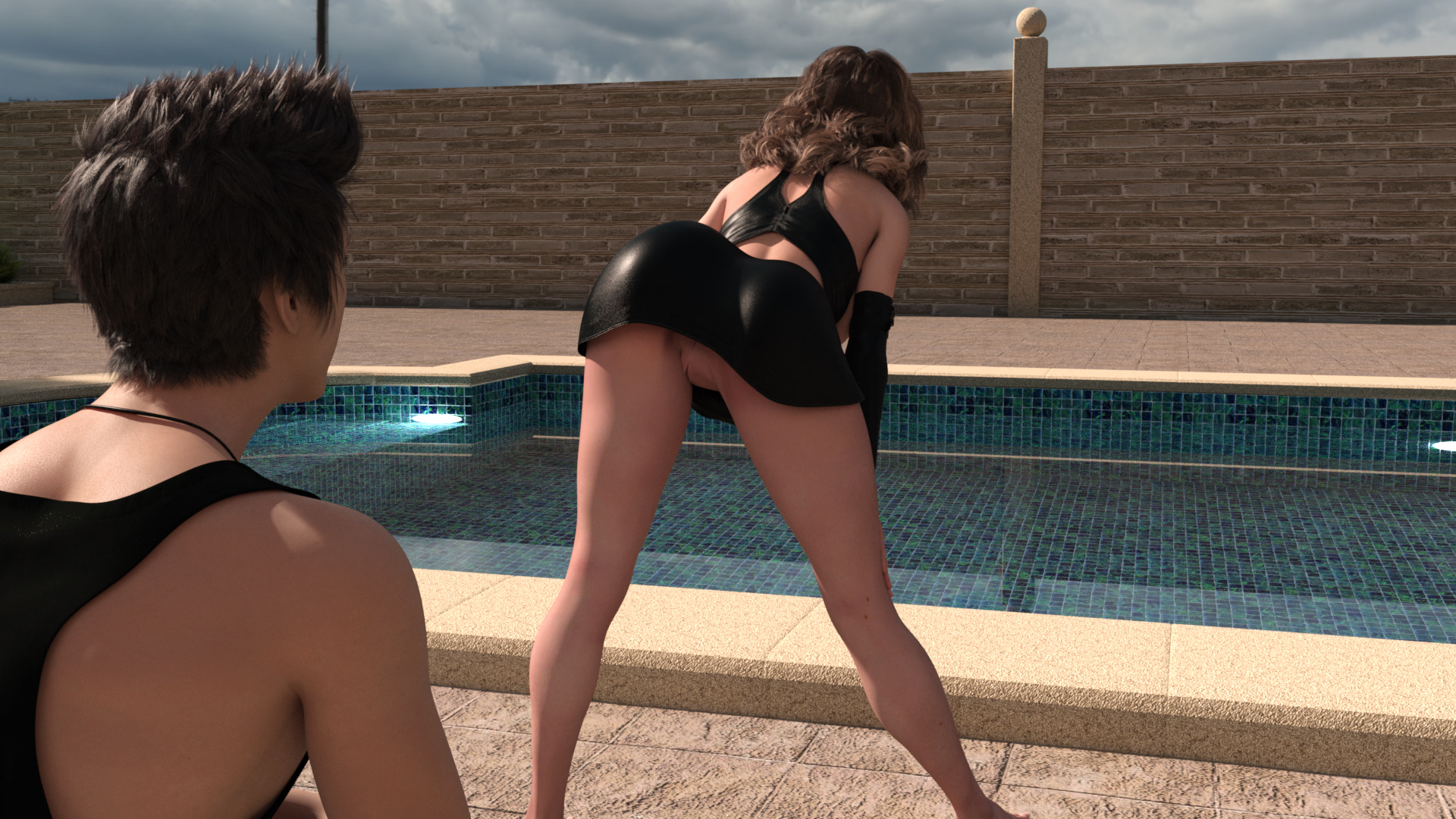 It may be linked to:
It may be linked to:
- fibromyalgia
- migraine headaches
- postherpetic neuralgia, a complication of shingles
- peripheral neuropathy, or damage to a group of nerves
- multiple sclerosis (MS)
- shingles
- opioid use
- chemotherapy
- diet and nutrition factors
- diabetes
- trauma
A 2018 clinical trial indicated that PIEZO2, a gene that controls the sense of touch, may contribute to tactile allodynia.
Fibromyalgia
Fibromyalgia is a disorder in which you feel muscle and joint pain throughout your body that isn’t related to an injury or a condition, such as arthritis.
Instead, it seems to be linked to the way your brain processes pain signals from your body. It’s still something of a medical mystery. Scientists don’t quite understand its roots, but it tends to run in families.
Certain viruses, stress, or trauma might also trigger fibromyalgia.
Migraine headaches
Migraine is a condition that causes intense pain. Changes in nerve signals and chemical activity in your brain trigger migraine headaches. In some cases, these changes can cause allodynia.
Changes in nerve signals and chemical activity in your brain trigger migraine headaches. In some cases, these changes can cause allodynia.
Peripheral neuropathy
Peripheral neuropathy happens when the nerves that connect your body to your spinal cord and brain become damaged or destroyed. It can result from several conditions, such as diabetes.
Multiple sclerosis
Multiple sclerosis is a progressive neurologic disorder caused by the loss of myelin, an insulating substance that coats the nerves, spinal cord, and portions of the brain. Damaged nerves transmit abnormal pain signals to the brain. Allodynia is common in MS patients who experience chronic pain.
Chickenpox, shingles, and postherpetic neuralgia
Shingles is a disease caused by the varicella-zoster virus, which also causes chickenpox.
Postherpetic neuralgia is the most common complication of shingles. Heightened sensitivity to touch is a potential symptom of postherpetic neuralgia.
A 2018 study noted that tactile allodynia was common in people with shingles.
“Any nerve damage, however central or peripheral, can be associated with allodynia,” Mikhael says. “The shingle virus causes damage to the affected nerve.”
Opioid use
Opioid use can induce hyperalgesia, a condition involving amplified pain that can lead to allodynia, according to a 2017 review.
“Opioid exposure causes changes in the central nervous system, which can also lead to an intensification of other sensations of pain, including but not limited to allodynia,” says Seth A. Waldman, MD, MBE, director of the division of pain management at Hospital for Special Surgery.
If a person regularly uses opioids, they may feel they need higher doses to alleviate the pain. Mikhael says this can increase the risk of developing allodynia.
“Excessive use of opioids can cause a paradoxical effect, so instead of the narcotics alleviating pain, it causes you to have even more pain and sensitivity,” he says.
Mikhael notes that several factors contribute to the link between opioid use and allodynia, including:
- brain disorders
- differences in pain processing
- malfunction of opioid receptors
Chemotherapy
Mikhael says chemotherapy can have a toxic effect on nerves, which can result in peripheral nerve damage. Sometimes, this nerve damage causes allodynia.
A 2019 study in mice indicated that chemotherapy could induce mechanical allodynia.
A 2019 paper pointed to research suggesting that mechanical or thermal allodynia frequently occurred in people experiencing chemotherapy-induced peripheral neuropathy (CIPN).
Diet and nutrition
Mikhael notes that vitamin deficiencies can play a role in the development of allodynia. It may also develop as a result of diabetes.
“Vitamin deficiency can cause nerve damage and consequently develop allodynia,” he says. “Correcting and treating deficiencies in vitamins B12, E, B6, folic acid, copper, and B1 are very important. Foods high in fat and sugar tend to aggravate these symptoms even more.”
Foods high in fat and sugar tend to aggravate these symptoms even more.”
A 2017 study in mice suggested that high fat diets and obesity were linked to allodynia.
Trauma
Mikhael says even seemingly minor trauma, like spraining an ankle while playing sports, can result in allodynia.
“The trauma can cause an abnormal response and sensitization of the central nervous system,” he says. “Any crushing injury to the extremity or extreme injury like a spinal cord injury can cause allodynia.”
A small 2021 study involving 30 people with post-traumatic headaches suggested 79 percent of participants experienced hypersensitivity. Of those people, 54 percent were affected by tactile and light hypersensitivity.
If you notice your skin has become more sensitive to touch than normal, you can run a self-test to determine whether you may have symptoms of allodynia. To do this:
- Brush a dry cotton pad on your skin.
- Apply a hot or cold compress.
If you experience a painful tingling feeling in response to any of these stimuli, you might have allodynia. It’s important to make an appointment with a doctor to confirm this.
It’s important to make an appointment with a doctor to confirm this.
Your doctor will go over any underlying conditions, such as diabetes, and ask you about symptoms.
“When discussing with your doctor, come prepared with a description of your pain, as accurate as possible,” says Amanda Persaud, MD, a neurologist with Northwell Health. “The description of the quality of pain is very important when deciphering whether pain is neuropathic, like allodynia.”
Persaud suggests using these terms to describe symptoms, as applicable:
- burning
- throbbing
- constant
- intermittent
- radiating
Tawfik says your doctor will likely run a similar test to your self-examination.
Once a doctor has determined allodynic pain, they can run further tests to find the underlying cause, says William Caldwell, DO, director of the Center for Pain Management at Stony Brook Medicine.
Additional testing for the underlying cause may include:
- blood tests, such as a hemoglobin A1c blood test
- MRI
- electromyography (EMG)
If your doctor suspects you might have diabetes, they will likely order blood tests to measure your level of blood glucose. They might also order blood tests to check for other possible causes of your symptoms, such as thyroid disease or infection.
They might also order blood tests to check for other possible causes of your symptoms, such as thyroid disease or infection.
Mikhael notes that treatment will depend on the underlying cause of your allodynia. Treatments may include:
- oral medications, such as lidocaine (Xylocaine) or pregabalin (Lyrica)
- topical treatments, such as lidocaine ointment or a capsaicin patch
- nonsteroidal anti-inflammatory drugs, such as naproxen (Aleve) or indomethacin
- lifestyle changes, like exercise and dietary changes
- cognitive behavioral therapy (CBT)
- CBD oil
- Sokeikakketsuto (SOKT) for people undergoing chemotherapy
- spinal cord stimulation
- nerve blockers
- surgery
Capsaicin products are commonly used to reduce pain from conditions like arthritis or muscle strains. They can include patches, creams, gels, and ointments.
“Surgery could be an option in cases of nerve entrapment or [central or peripheral] compression,” Mikhael says. “The implantation of neuromodulators can be very helpful in treatment.”
“The implantation of neuromodulators can be very helpful in treatment.”
Still, the best course of treatment is often managing the trigger.
“The focus in the treatment of allodynia needs to be on treating the causative condition,” says Lev Kalika, doctor of chiropractic and owner of New York Dynamic Neuromuscular Rehabilitation & Physical Therapy in New York City.
For example, managing diabetes can reduce allodynic pain, while cognitive behavioral therapy can help you cope better with pain and reduce triggers in your lifestyle.
Allodynia is painful, so it’s understandable people want to prevent it, particularly if they have risk factors.
While Caldwell says that allodynia is not entirely preventable, people with underlying conditions connected to allodynia can reduce their risk of it.
“Allodynic pain can develop with uncontrolled diabetes, and strict glycemic control can help to prevent the development of neuropathic pain,” Caldwell says.
“Allodynic pain can often occur after post-herpetic neuralgia [shingles] or trigeminal neuralgia, which are commonly triggered by stress or anxiety,” he says.
Better management of these can lessen the risk of flares of the underlying disease process, he notes.
Tawfik stresses the importance of seeing a doctor as quickly as possible if you’re experiencing abnormal pain.
“Any time someone has pain that outlasts its usefulness or expected post-injury trajectory, a person should see their doctor,” she says.
Caldwell says the underlying cause of allodynia will often determine people’s outlook.
“In many instances, time and proper treatment can decrease or eliminate pain,” he says. “Sometimes more advanced interventional pain procedures are needed to control the pain long term.”
Caldwell also notes allodynia can be chronic or come back, particularly if the underlying cause is not well managed.
Hypersensitive and allergic skin | Aven thermal water
For hypersensitive and allergic skin, use products that are designed to meet the needs of such skin for more gentle care and cleansing.
Whatever your skin type, exposure to certain factors can trigger irritation and redden your skin.
Brand
Eau thermale Avene
Sensitivity, irritation, allergy?
Sensitivity or irritation? Many of you have sensitive skin, but the severity can vary.
However, it is important to distinguish between sensitivity and hypersensitivity (or predisposition to allergies) of the skin.
Sensitive and hypersensitive/allergic skin
Sensitive skin: tender, light, sometimes a little dry, redness quickly appears. There is itching, a feeling of tightness, burning … The sun, cold and wind are factors of an aggressive effect on the skin, especially for fair skin.
There is itching, a feeling of tightness, burning … The sun, cold and wind are factors of an aggressive effect on the skin, especially for fair skin.
Some dermatological, cosmetic or therapeutic products contain ingredients that the skin does not tolerate, such as:
– cleansers that contain irritating surfactants.
– Acne treatment products with mild exfoliating effect.
In this case, the skin does not experience any relief, but on the contrary, when exposed to such unacceptable means, it is injured.
Sometimes your skin overreacts even with minimal “aggressive” exposure. There is itching, a feeling of tightness, redness, peeling. In this case, it’s time to make a choice in favor of products containing a minimum amount of ingredients.
Sensitive or hypersensitive skin: Allergy develops as a result of the body’s immune response (to the allergen). Obvious clinical manifestations from the skin can be observed: red spots with small eczematous elements, severe itching, swelling and wet irritations, combined with a greater or lesser degree of itching. If you develop an allergic reaction, see your doctor as soon as possible. With the help of allergological tests, he will be able to determine the cause of the allergy.
If you develop an allergic reaction, see your doctor as soon as possible. With the help of allergological tests, he will be able to determine the cause of the allergy.
Questions
What is sensitive skin?
A characteristic feature of sensitive skin is that it reacts to certain factors under certain circumstances faster or more pronounced than normal skin. This leads to unpleasant sensations (tightness, burning, itching …), and sometimes to the appearance of redness and dryness.
What causes sensitive skin?
One reason cannot be singled out, it is a complex of reasons. The skin is an organ that performs several functions, therefore, skin sensitivity can be caused by various disorders: damage to the stratum corneum leads to impaired barrier function, and hypervascularization leads to redness.
Can this sensitivity be controlled?
Even if the skin is sensitive, it is possible to reduce this phenomenon by stopping the use of products that are not well tolerated. It is necessary to replace them with special products that are well tolerated and contain powerful moisturizing ingredients that reach the stratum corneum.
Which products should be used daily for sensitive skin?
For cleansing, it is recommended to use dermatological complex cleansers and care products that do not contain soap.
In addition to moisturizing, use products that contain a minimum amount of ingredients in their composition to minimize the risk of skin irritation.
What is the difference between sensitive and allergic skin?
It is often difficult to distinguish between sensitive, irritated and allergic skin.
People who think they have allergic skin often have sensitive, even irritated skin. Such skin reacts to certain care products, topical preparations, dermatological and cosmetic products.
Allergies are caused by an immune response. Symptoms include the appearance of red plaques and small eczematous blisters, severe itching, swelling and weeping. The itching can sometimes be very severe.
Which products should be used daily for allergic skin?
Your doctor can help you choose the cleanser and moisturizer that’s best for your skin type.
Choose products that do not contain irritants or allergens and are clinically proven to be well tolerated.
Expert advice
Close
Subscribe to our
newsletter
If you are over 15 years old, you can receive our tips, special offers and information about your favorite products.
You are now subscribed to our newsletter
Enter your e-mail.
This email address is not valid
This email address is already subscribed
We, AVENE Dermatological Laboratories, are committed to keeping your email address confidential and using it exclusively to send you emails.
Learn more about our Privacy Policy.
Current search
Close
Close
Share your opinion
Rate*
In a few words*
Tell me more*
* Required fields
Log in or register to share your feedback with the Avène Thermal Spring Water community.
I already have an account on the site, and I connect at any time.
Forgot your password?
About me
Create an account to enjoy the privileges of a member of Eau Thermale Avène
About me
Last name *
Name *
E-mail *
Password *
Date of birth *
Day
-Day12345678910111213141516171819202122232425262728293031
-Day
Month
-Month MonFebMarAprMayJunJulAugSepOctNovDec
-Month
Year
-Year200920082007200620052004200320022001200019991998199719 961995199419931992199119
- 9198819871986198519841983198219811980197919781977197619751974197319721971197019691968196719661 9651964196319621961196019591958195719561955195419531952195119501949194819471946194519441943194219411940193919381937193619351934193 3193219311930192919281927192619251924192319221921192019191918191719161915191419131912191119101909190819071906190519041
0219011
99189818971896189518941893189218911890
-Year
Yes, I would like to receive the Newsletter and SMS text messages about news and offers from the brand Eau thermale Avène
Yes, I would like to receive Newsletters on Pierre Fabre group brand news.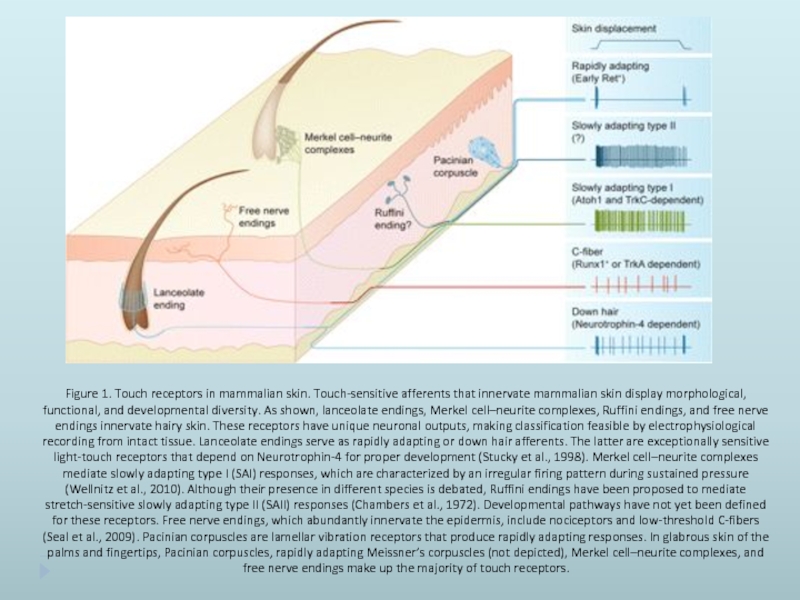
?
Brands of the Pierre Fabre Group:
I accept the Terms of ServiceI *
*Required fields
When you create an account, you will have access to your membership section. We undertake to ensure the security of this information (if you comply with the agreed conditions and no more than 3 years have passed since our last contact with you). We undertake to use this information solely to personalize the content offered to you.
Feel free to change it here or ask us to remove it.
Learn more about our Privacy Policy.
Thanks for sharing!
Your comment has been sent to the site administrators and will be published after verification.
When the skin becomes sensitive, how can it be helped?
All products
Cosmetics
Nutritional supplements
Mothers and children
Oral care
Hygiene
Medical products
Medicines
Brands
- org/ListItem”>
Azeta.lv
beauty
Skin care
When the skin has become sensitive, how to help it?
When the skin has become sensitive, how to help it?
When the skin is healthy, it
able to take care of herself, and her natural protective barrier protects the body
against bacterial penetration and water evaporation. This skin is hydrated enough.
firm, smooth and elastic. However, after about 25 years, when the skin begins to
age, it can no longer fully perform its natural functions. Stress
Stress
because of the fast-paced everyday lifestyle, its characteristics, influence
environment, such as rapid temperature changes, climatic
conditions, heating and daily wearing of face masks, affect the natural
skin defenses. The skin may suddenly become sensitive and react with redness,
drawing or burning sensation, dryness, rash. Sensitive skin not only
causes daily discomfort and thereby reduces the quality of life, but also
lack of proper care can lead to more serious skin problems with
long-term effects, such as allergies, inflammation,
dermatoses.
Sensitive skin is not
the skin condition you have to come to terms with
Before choosing an option
care for reddened skin, it is important to understand that sensitive skin is not
skin type. Due to various factors, absolutely any
skin, regardless of its type – both combination, oily and dry. Very
it is important to adapt to your skin type by choosing skin care products that
soothe the skin, reduce redness and increase the skin’s sensitivity threshold.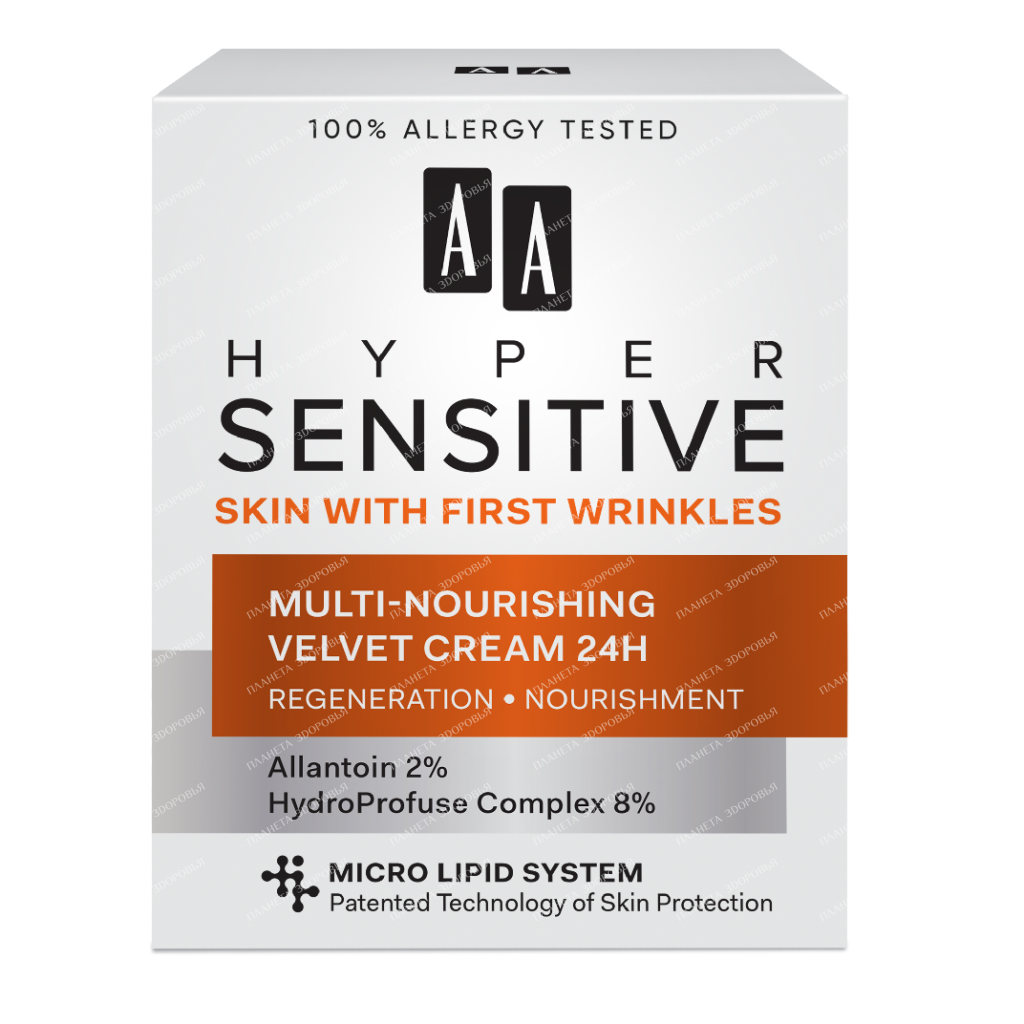
A thick and rich cream that is ideal for dry and sensitive skin.
skin, will be heavy on oily, sensitive skin and may clog pores,
causing more breakouts. For example, Algotherm AlgoSensi high tolerance protective fluid can be chosen for daily care of combination reddened skin.
For dry skin with redness, entrust creams with nourishing ingredients, such as
like shea butter and herbal glycerin, in addition to soothing the skin
ingredients. To reduce the redness of dry skin, for example, a cream will be useful.
Institut Esthederm Sensi System Calming Biomimetic Cream as it is optional
acts against the aging process of the skin and strengthens its protective mechanisms. Should
look on the shelves of pharmacies for reliable cosmetic brands that have developed
science-based, effective, skin- and nature-friendly products.
How to help as much as possible
sensitive skin?
habits
The first step to improvement
the condition of reddened sensitive skin is to exclude as much as possible from
their daily habits, those activities that serve as irritants.
It is necessary to refuse as much as possible any provoking factors, such as:
– aggressive cleaning agents
facial products, such as abrasive scrubs;
– cosmetics and products
hygiene containing irritants;
– excessive exposure
UV radiation – tanning in the sun or in a solarium;
– frequent use
alcohol;
– visiting a bathhouse, hot baths.
2. Clean your skin regularly
cleanse, sensitive skin should be cleansed with mild cleansers.
It is important to remember that pure water alone cannot adequately
clean the skin of makeup, sebum, dust and dirt, thus creating
additional factors of increased skin sensitivity. It is also wrong to think
that cleansing will be an unnecessary skin irritation, so it should be avoided.
On the contrary, choosing a suitable, gentle and non-abrasive product will improve the condition.
skin. Cleansers Institut Esthederm Osmoclean
choose both for daily cleansing of the skin, and for regular more
deep cleansing of pores from dead skin cells.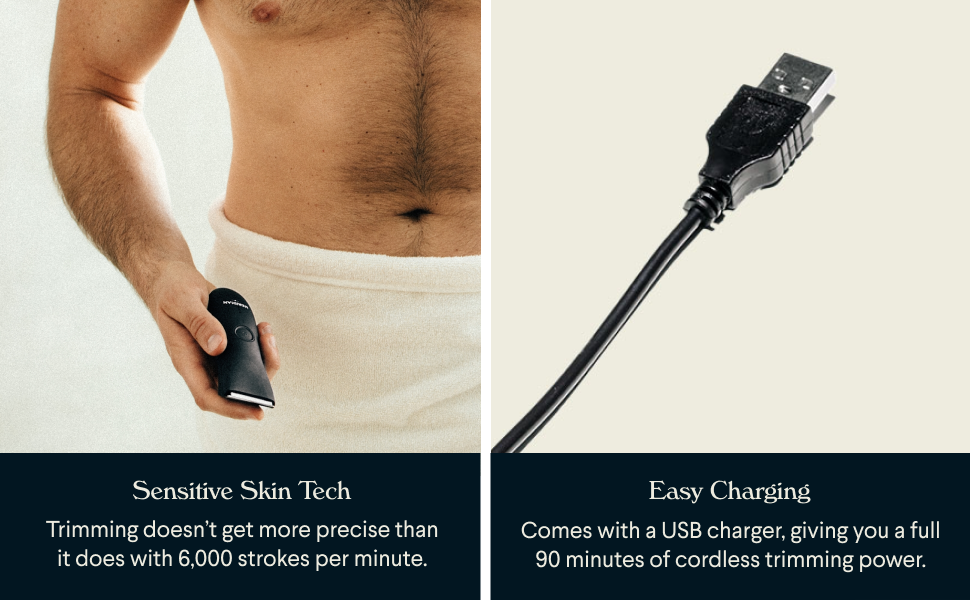 AlgothermAlgoEssential cleansers contain algae extract to soothe skin and
AlgothermAlgoEssential cleansers contain algae extract to soothe skin and
relieving redness. Algotherm AlgoEssentialEnzyme Peeling Gel is a gentle peel that is also suitable for
sensitive dry skin, it deeply cleanses the skin without irritating it.
3. Use daily
special skin care products
In the daily beauty ritual
use skin care products that are especially suitable for reddened
sensitive skin, as they soothe the skin, reduce sensitivity
skin and inflammatory processes, and at the same time help the skin to increase its threshold
sensitivity, making it less reactive. .
Serums
Maybe you found your
perfect face cream and don’t want to change it. In this case, under
daily moisturizer apply a serum specially formulated for
sensitive or reddened skin. In addition to face cream, which
suits your skin type, choose for example the Institut EsthedermIntensive Vitamin E Serum , which immediately reduces discomfort and
skin reactivity.
